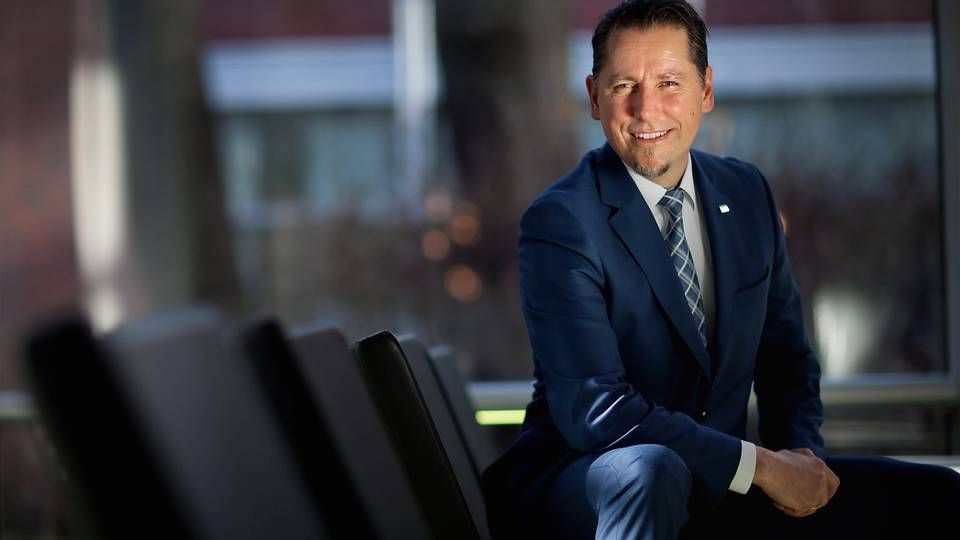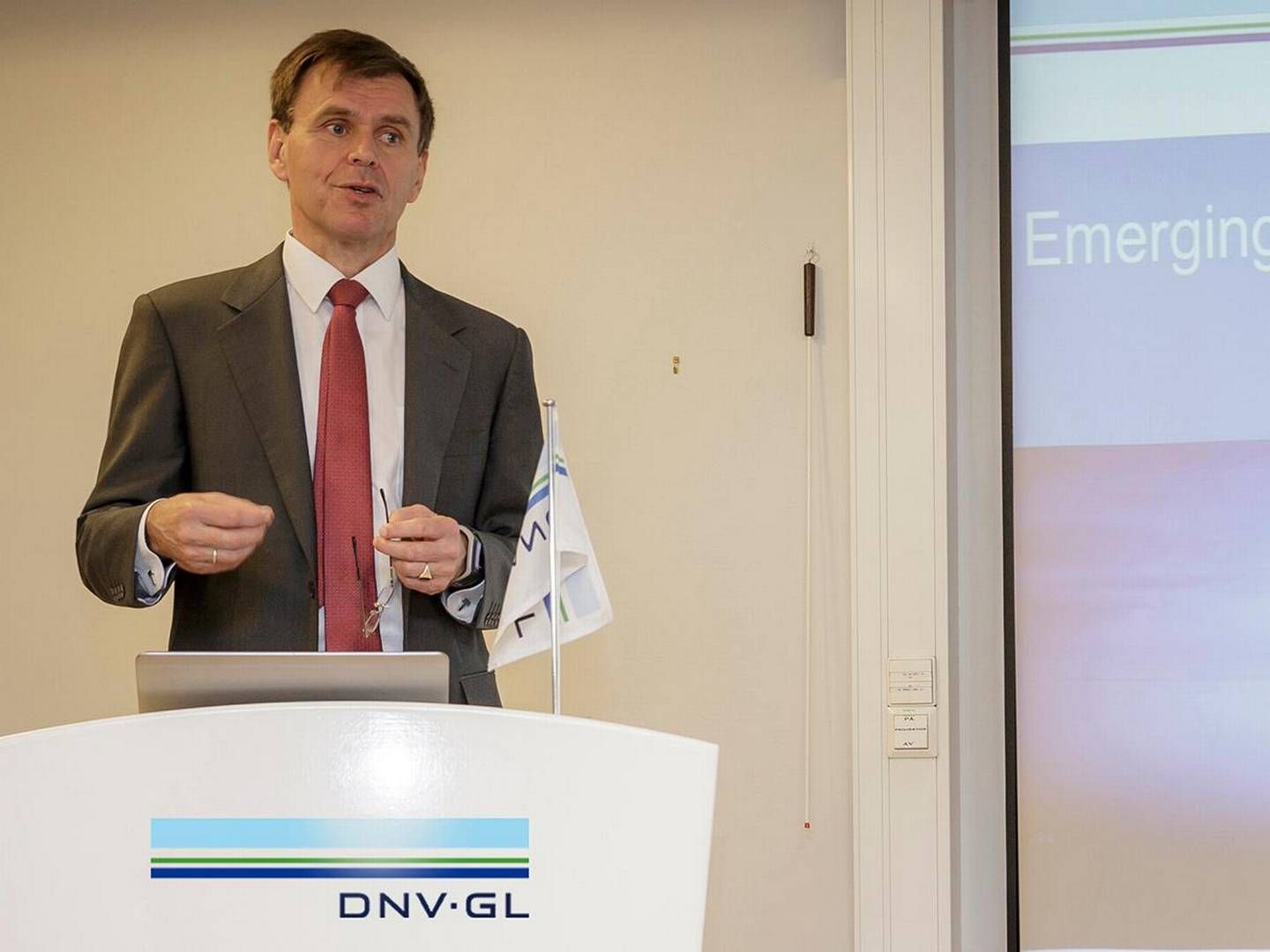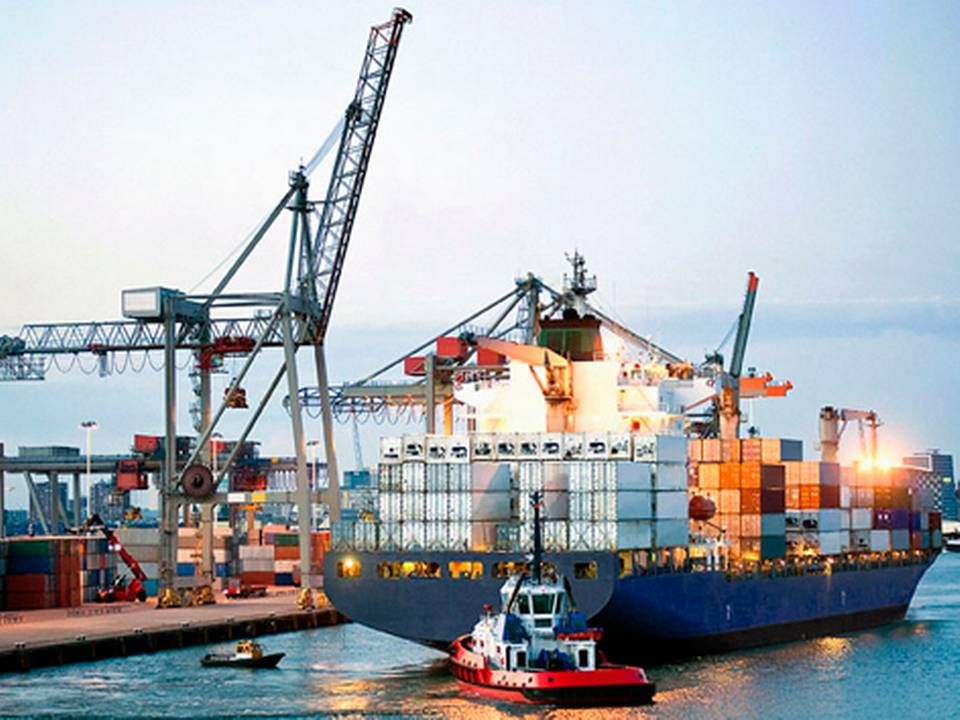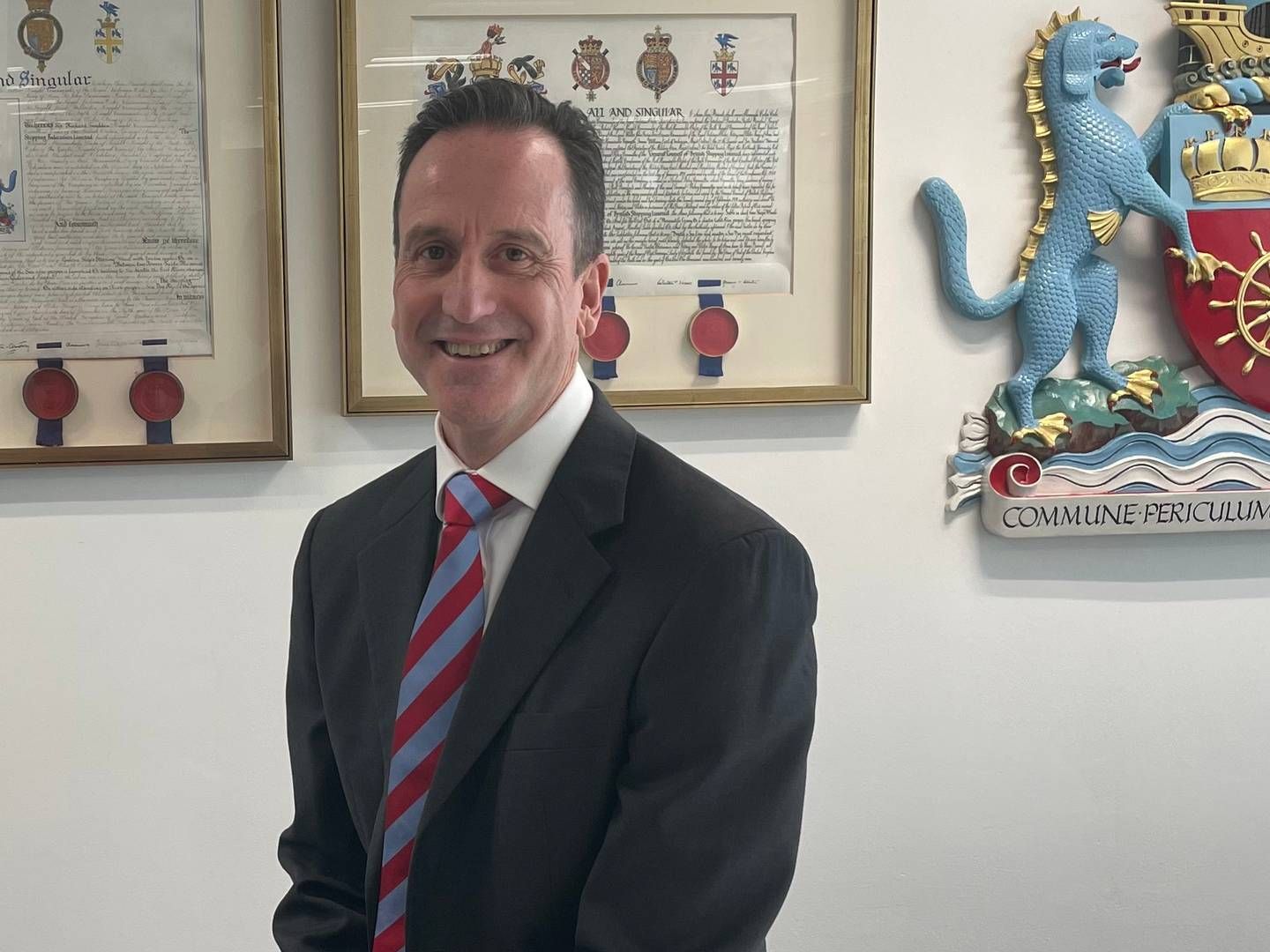DNV GL now also affected by the shipping crisis

Remi Eriksen has been on the road for close to five months. Since taking over the reins as CEO of the world's largest classification bureau, DNV GL, on August 1st, succeeding Danish Henrik Madsen, Remi Eriksen has spent most of his time traveling the world and getting a handle on the business, which with 15,000 employees cover more than 100 countries.
Not only does he need to get grips on the massive enterprise, he has also taken over the reins at a time when the crisis is really showing its teeth in several shipping segments, the offshore industry and not least in oil and gas, which have taken a big toll from the sliding oil prices and are currently facing dire conditions. And shipping is the biggest and most important business for DNV GL, whose other fields include sustainable energy, classification of management systems and life science.
Meanwhile, Remi Eriksen will also lead DNV GL through the third and final year of the merger that began in September 2013 between Norwegian DNV and Germany's Germanisher Lloyd. In relation to the first full annual report in 2014, DNV GL was able to present a 10 percent increase in revenue to a total USD 2.44 billion. Already at this point, then-CEO Henrik Madsen hinted that DNV GL would inevitably be hit by the decline in the company's core markets.
And this development looks set to hit DNV GL in 2015, 2016 and 2017, explains Remi Eriksen, who has spent 23 years with DNV GL, most recently as COO and executive vice president. In 2015 DNV GL has reduced its number of employees by more than 900, most of these through natural departures and voluntary resignations. The number is expected to reach 1,000 by the end of the year, and the workforce could face another hit in 2016:
"Of course we have to adapt our capacity to what is needed in the market. We're not isolated from this downturn, and we're already now noting an impact from some of our customers, some of whom are struggling, and the activity level is lower overall," he says, stressing that the staff reduction in 2015 also forms part of the merger.
"Meanwhile, we've entered the third year of the merger, and part of this merger is to look for synergies and to reduce and to avoid duplicate functions, so while we have to adjust in terms of costs and staff, which were planned as part of the merger, we've learned that it's possible to reduce the workforce and at the same time deliver improved service and increased competence."
How many employees will be affected in the coming year remains to be determined, as DNV GL is still working on the plans for 2016. Where revenue increased 10 percent in 2014, the number is currently down three percent due to the weak markets.
Two types of leadership
Not all of the classification bureau's markets are hit equally hard, and, for instance, the work related to sustainable energy, management systems certification and life sciences can create a counterbalance to the downturn in shipping and oil and gas, explains Remi Eriksen:
"One of the key topics for DNV GL in the coming year is to balance growth and contraction. We are in different industries, and the arrow is not pointing up for the next year in the maritime sector nor in oil and gas, so it's important to win the contracts that are available, while also trying to pursue growth opportunities in the other sectors," he says, adding that he as CEO must handle the balance between acceleration and a slowdown.
"This type of environment calls for two types of leadership, which also opens up for a range of opportunities. We have a flexible workforce. When there's growth in an area, one can maintain more competencies when facing a downturn. For a knowledge-based company such as ours, which is based on our employees' competencies, it's important that we can maintain these competencies during a downturn," he says:
"The diversity in our portfolio, even though shipping accounts for a big part, is a strength for us when we face challenging times."
Remi Eriksen explains that a majority of DNV GL's employees are have advanced degrees, engineers in particular, which can easily be used in other industries covered by the company if, for instance, there is not a significant need in shipping in the current environment. He is not worried about 2016, which still looks solid in terms of orders, even though the number of newbuildings is hovering at a 15 year low.
"On the longer term I'm of course thinking about what's next. Will it be 2017 or 2018 in which the global trade surpasses and eats up the overcapacity that is currently plaguing most segments? I'm not so worried about 2016, but I don't at this time have a good answer as to where we'll be," he says.
Even though 2016 will be more difficult to navigate than previous years, DNV GL will maintain its investments in research and innovation, which have always accounted for five percent of the revenue.
"Cutbacks here could be one way in which to ensure our ebitda, but innovation and research are so important to the company on the long term that we're going to maintain the investments. Next year we'll spend upwards of 50 percent of this figure on digitalization transformation, and then we'll invest in becoming more efficient in the way we operate. We need to invest during a crisis as well, so we'll be even better prepared for when the markets recover," says Remi Eriksen.
New set of rules
Despite the merger costing scores of employees, the entire rationale behind the merger was to reduce costs, combine two global players' network, and in this way creating better services for the company's customers at a lower price. And this goal has been achieved, stresses Remi Eriksen:
"When one can combine infrastructure, buildings, IT, production, etc., it brings significant cost reductions, while also enabling us to offer a bigger network of ship inspectors and engineers, and improved coverage of the segments in shipping. We now have a 360 degree coverage," he says.
DNV GL's marine business grows
Another process related to the merger concerns rules, as DNV GL in October announced a new set of rules for classifying ships - a process that involved several hundreds of stakeholders. Around 80 percent of the merger process has been completed, estimates Eriksen, who is proud to have completed the new set of rules, which came into force on January 1st 2016.
"This is the first time that classification companies have merged, and this is the first time that anyone has spent considerable resources looking into what's needed now and going forward. We now have a modern and efficient set of rules which could serve as a new benchmark for the industry," he says.
Future trends
When Remi Eriksen is asked to point to the biggest trends in shipping and offshore in the coming years, he mentions, among other things, the growth in global trade - this factor is obviously important to the carriers, which have been good at staying relevant in the global economy, he explains.
Another trend is digitalization, which the shipping industry is in the process of embracing. With this technology, ships can improve their safety, efficiency and not least their environmental impact. An issue that will only be subject to increasing focus from the surrounding world going forward.
"One can combine data from various sources, and not just on board the ships, basically optimizing the entire supply chain. This is already happening. The communication channels between the ship and land have been much improved. There is more expertise available to the crew on board, which can perform tasks that do not directly create value on board quicker, thus creating more time for the crew and the captain," says Remi Eriksen.
Another example is the use of sensors on board the ship, both on engines and the hull. DNG GL is experimenting with drones for examining ships, and there are many pilot projects exploring new digital technologies aimed at helping the industry do things in a more efficient and greener manner. And this is important, says Remi Eriksen:
"It will contribute to the bottom line, improve safety at sea and reduce air emissions by using technology in the maritime industry. People are looking for ways to save money. I believe one can save money and be more environmentally friendly by using this technology. It's not contradictory."
DNV GL: Shipping slow to embrace LNG
DNV GL grows and announces layoffs
DNV GL: Three things to drive innovation in the future of shipping
Related articles
DNV GL: Shipping slow to embrace LNG
For subscribers
DNV GL grows and announces layoffs
For subscribers





















